Pearl Route Resilience - Brouwershaven
Zeeland is like a large oyster with many beautiful pearls. With this puzzle route, you will discover the hidden treasures of Brouwershaven. Sometimes they are so well hidden that you can only find them by looking closely, listening, and doing.
Starting point: Markt 8, 4318 AG Brouwershaven Route length: 3.5 kilometers
How does it work? Follow the route and learn more about the surroundings. Answer the questions and collect letters. At the end of the route, you can form a word with these letters.
Take a look
Sights on this route
Starting point:
BrouwershavenStarting point
Brouwershaven
WATCH: Intro Brouwershaven
Brouwershaven, town on the Grevelingen and city with many faces. Once a trading town where many goods were landed or shipped in the days when Rotterdam was not easily accessible by water. And, of1
WATCH: Intro Brouwershaven
Brouwershaven, town on the Grevelingen and city with many faces. Once a trading town where many goods were landed or shipped in the days when Rotterdam was not easily accessible by water. And, of course, it is the birthplace of the famous Jacob Cats. Among all these highs, Brouwershaven also has low points. But each time it rose again.
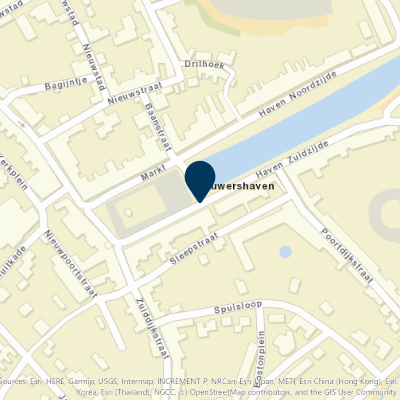
WATCH: Intro Brouwershaven
Brouwershaven, town on the Grevelingen and city with many faces. Once a trading town where many goods were landed or shipped in the days when Rotterdam was not easily accessible by water. And, of1
Brouws museum
At the maritime port of Brouwershaven, we find this small-scale museum where you can learn more about the history of seafaring in the various exhibition halls.

WATCH & QUESTION: Trading town
Question 1: What was mainly in the barrels moved by the wooden crane in the market? Madder and ... Write down the 1st letter.
WATCH & QUESTION: Trading town
Schouwen and Duiveland used to be two islands. A wide creek called Gouwe flowed between them. Ebb and flow created tidal creeks. One of these creeks ended in the Schouwen country at Brijdorpe, then a village with a church. When the polder was embanked in the 12th century, a dam was placed in the creek and a sluice was built in the dam to drain the polder water. A village had to be built around that dam. Brouwershaven was built on the dikes.
Brouwershaven grew into a beautiful little town where a lot of trade was done. Barrels of herring and madder (for the red dye) were loaded from the market into the ships in the harbour using a wooden crane and transported to Brabant, Rotterdam and Antwerp, among other places. But mussels, shrimps and beer also made a lot of money. And at the scales, people weighed grain, flour and metal. Nowadays, there is not much trade, but the remains of this trading town are still present and clearly visible.
Question 1: What was mainly in the barrels that the wooden crane moved around the market? Madder and ... Write down the 1st letter.
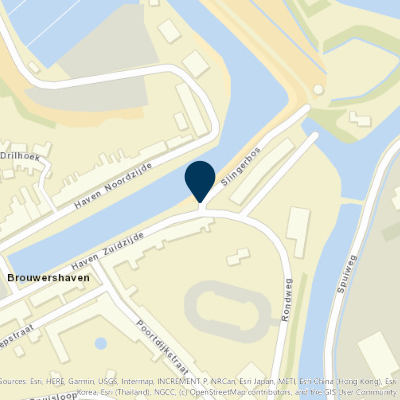
WATCH & QUESTION: Trading town
Question 1: What was mainly in the barrels moved by the wooden crane in the market? Madder and ... Write down the 1st letter.
WATCH & QUESTION: Slingerbos
Question 2: By which municipality has Brouwershaven been adopted? Write down the 2nd letter.
WATCH & QUESTION: Slingerbos
In February 1953, there was a big storm and many dykes in the south-west of the Netherlands broke under the force of the pounding water. It also affected Brouwershaven. Three people died and the water left behind a mess. Money was needed for reconstruction and it came from the municipality of Voorburg (near The Hague). This municipality adopted the town and donated 50,000 guilders (about 23,000 euros in conversion). Buildings and streets were repaired, but much more happened. For instance, 92 pairs of socks were knitted and all 220 schoolchildren received a present. A memorial stone was placed in the renovated Slingerbos to remember this special adoption.
Question 2: Which municipality adopted Brouwershaven? Write down the 2nd letter.
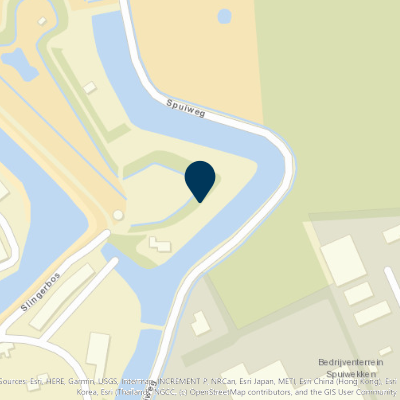
WATCH & QUESTION: Slingerbos
Question 2: By which municipality has Brouwershaven been adopted? Write down the 2nd letter.
WATCH: Smalstad
In 1403, Brouwershaven was granted city rights. But it remained a narrow town, a city too small to participate in the States of Zeeland. So you had no say as a town. In 1575, the barely fortified town was captured by Spanish troops and then set on fire.
WATCH: Smalstad
Smalstad
In 1403, Brouwershaven was granted city rights. But it remained a narrow town, a city too small to participate in the States of Zeeland. So you had no say as a town. In 1575, the barely fortified town was captured by Spanish troops and then set on fire. This was not allowed to happen again and earthen city walls were erected, surrounded by a wet moat. Five gates gave access to the city. In the storm surge of 1682, part of the fortifications are destroyed. The fortress was lifted in 1820, and then dismantled. As you can still see, the ramparts and moats on the east and north sides of the city have been preserved.
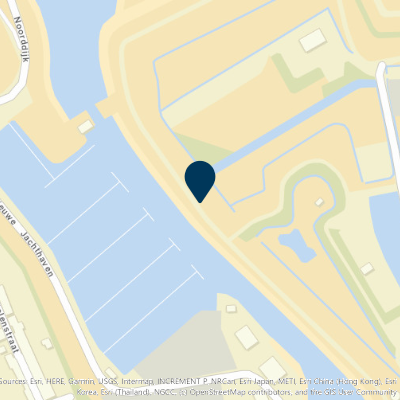
WATCH: Smalstad
In 1403, Brouwershaven was granted city rights. But it remained a narrow town, a city too small to participate in the States of Zeeland. So you had no say as a town. In 1575, the barely fortified town was captured by Spanish troops and then set on fire.
Molen Windlust
Discover Windlust Mill in Brouwershaven. This functional corn mill from 1935 is located at Slingerbos and has a span of 7.35 meters. The octagonal mill is small but definitely worth a visit.

WATCH & QUESTION: Port City
Question 3: What is the name of the luxury seaside hotel? Write down the 1st letter.
WATCH & QUESTION: Port City
Rotterdam was and is a world-class port city. But what do you do when you can't get there with your ship? Then you end up in Brouwershaven. That's how it happened around 1840. Silting up of the Brielse Maas and the Goereese Gat meant that sea-going ships could not get to Rotterdam. Nor in the port of Brouwershaven, which was far too small and the access channel was too narrow and shallow. So dukdalven were quickly installed, a kind of mooring posts near the sandbar “Dwars in de weg”.
Hundreds of ships passed by and this made Brouwershaven bustle. Many sea and river pilots (people who know a lot about the local waterways) came to live there and er they got their own offices 'the Pilotage building.' A huge barrel warehouse also arrived. The barrels, which were stored here, were used to indicate the navigational route for ships. The red barrels on the right and the green barrels on the left. Between them is the safe navigation route.
At the time, as many as 27 hotels and cafes could be found in the town, not to mention the luxurious seaside hotel Catsburg. But in 1870, Rotterdam got another connection to the sea. There was no more bustle. People moved away and the luxury seaside hotel was demolished. In Brouwershaven, peace returned.
Question 3: What is the name of the luxury seaside hotel? Write down the 1st letter.
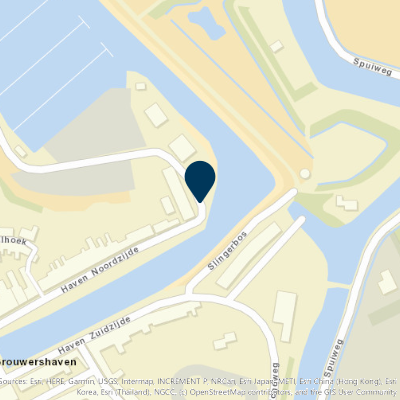
WATCH & QUESTION: Port City
Question 3: What is the name of the luxury seaside hotel? Write down the 1st letter.
QUESTION: Mill
Question 4: On which dike is this mill located? Write down the last letter.
QUESTION: Mill
Because Brouwershaven's mill is on the town's ramparts, you can see it from afar. Built in 1724, grain was still ground here until 1954. Restoration began a few years later and found traces of an old mill that stood on the same spot. The last restoration took place in the 1960s by the millwright J. van den Hamer. So the little mill “windlust” has apparently been good publicity! Of course, this mill also has a name. Which one is that? You can find that on the cap of the mill.
Question 4: On which dike is this mill located? Write down the last letter.
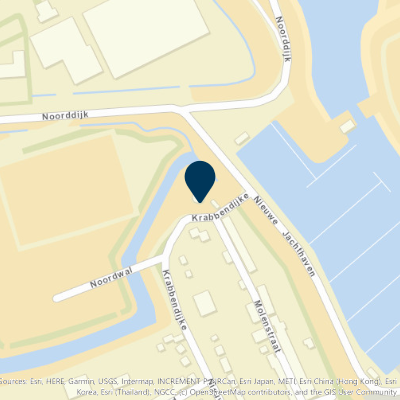
QUESTION: Mill
Question 4: On which dike is this mill located? Write down the last letter.
Molen De Haan
Discover the unique Molen De Haan: a special ground-sailer built in 1724 on the Noordwal. Originally a low platform mill, but later lowered to a ground-sailer. After restoration in 1965, it is now a vacation home.

WATCH: St. Nicholas Church
Discover The St. Nicholas Church: A unique location with historical significance and excellent acoustics.
WATCH: St. Nicholas Church
Construction of this Catholic church began in 1325. A lot less wide back then, about 11 metres. Dedicated to Peter and Paul. But from 1540 it is St Nicholas, who among other things protects people at sea.
In the hundreds of years that followed, the church expanded more and more into the church it is today. 82.5 metres long, 28.5 metres wide and almost 25 metres high! If you look closely, you can see that the wooden vault rests on carved figures, chalk statues. It's a good thing they sit so high, because that's probably why they survived the iconoclasm.
St Nicholas Church has had to endure more, though. The two largest glass windows next to the organ were destroyed by a storm in the early 1800s. They were subsequently bricked up. And the 1953 flood disaster also caused a lot of damage. And if that wasn't enough, some 40 years after that came the death watch beetle. They love wood and there is plenty of it in this church. Fortunately, the church has been well restored several times, so we can enjoy this beautiful church where history is there for the taking.
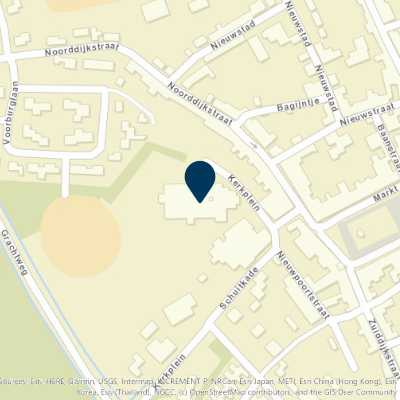
WATCH: St. Nicholas Church
Discover The St. Nicholas Church: A unique location with historical significance and excellent acoustics.
WATCH & QUESTION: Town Hall
Question 5: The coat of arms with the waves holding the lion is the coat of arms of? Note the 2nd letter.
WATCH & QUESTION: Town Hall
The back of this town hall was built in the 15th century and was probably the front then! So the front part was built later, in the 16th century. The lions bear arms. Arms of Zeeland and arms of Brouwershaven. Above the door, in a niche you can see the blindfolded Lady Justice sitting with her sword and scales. She speaks justice. Blindfolded, because she is impartial. It doesn't matter who you are. She hears everything and weighs (hence the scales) whether someone is guilty. If someone is guilty, punishment follows. She already keeps her sword at the ready.
The attic of the town hall also housed a prison. Around 1765, a swindler, Johan Cato Kamerling, sat here. He told everyone he was a doctor and many people believed him. He even married the mayor's daughter! But he was still exposed, thrown in jail and even branded.
On top of the town hall is another statue of a woman with three children. It is Charitas, or Mercy, because this building also housed an orphanage. Thus, it was and is a home for many different people.
Question 5: The coat of arms with the waves holding the lion is the coat of arms of? Write down the 2nd letter.
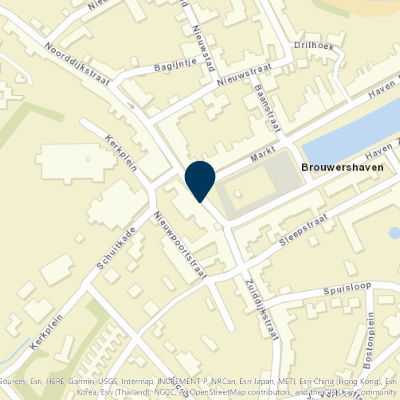
WATCH & QUESTION: Town Hall
Question 5: The coat of arms with the waves holding the lion is the coat of arms of? Note the 2nd letter.
WATCH: The City of Jacob Cats
Discover the birthplace of Jacob Cats, a historically important person known as a poet, lawyer and politician.
WATCH: The City of Jacob Cats
You may have heard of the Catshuis. The house in The Hague where the prime minister lives. This is named after Jacob Cats who also lived there and was council pensionary of Holland around 1640. This is similar to the prime minister. But it all started here in Brouwershaven. You have already walked past the house where Jacob Cats was born on 10 November 1577. It is on the corner of Kerkstraat and Noorddijkstraat.
He became known for his lyrics in verse form. So famous, in fact, that people used to have two books in their homes anyway, the Bible and a book by Cats. His most famous work was the book “Marriage” with useful tips for a good marriage: the marriage age, parenting and even bedtime lessons. Later, he became a politician and lawyer and so came to live in The Hague. There he dies in 1660, leaving to his two daughters a sum of 2.3 million guilders!
By now, you have collected a number of letters. These form a surname that you can find back on the market. This is how you find the pearl of resilience. When you have found her, look further. The pearls are scattered all over Zeeland! Search and find them all!

WATCH: The City of Jacob Cats
Discover the birthplace of Jacob Cats, a historically important person known as a poet, lawyer and politician.
End point:
BrouwershavenEnd point
Brouwershaven
Directions
Starting point:
BrouwershavenBrouwershaven, a town on the Grevelingen and a town with many faces. Once a trading town where many goods were brought ashore or shipped in the time when Rotterdam was not yet easily accessible by water. And of course, it is the birthplace of the famous Jacob Cats. Among all these highlights, Brouwershaven also knows low points. But each time it recovered.
Smalstad (Narrow City)
In 1403, Brouwershaven receives city rights. But it remains a smalstad, a city too small to participate in the States of Zeeland. So, as a city, you had no say. In 1575, the barely fortified city is conquered by Spanish troops and subsequently set on fire. That must not happen again, and earthen city walls surrounded by a wet moat are built. Five gates give access to the city. During the storm flood of 1682, part of the fortifications is destroyed. The fortress is abolished in 1820 and subsequently dismantled. The ramparts and moats on the east and north sides of the city have been preserved, as you can still see.
1. Trading Town
Schouwen and Duiveland used to be two islands. A wide creek, called Gouwe, flowed between them. Tides created tidal creeks. One of these creeks ended in the land of Schouwen near Brijdorpe, then a village with a church. When the polder was reclaimed in the 12th century, a dam was built in the creek, and a lock in the dam to drain the polder water. A village had to be built around that dam. And so, Brouwershaven was built on the dikes that were constructed.
Brouwershaven grew into a beautiful town where much trade was conducted. Barrels of herring and madder (for the red dye) were loaded with a wooden crane from the market onto ships in the harbor and transported to, among others, Brabant, Rotterdam, and Antwerp. But a lot of money was also earned with mussels, shrimp, and beer. And at the weigh house, grain, flour, and metal were weighed. Meanwhile, there is not much trade anymore, but the remnants of this trading town are still present and clearly visible.
Watch & Question: Trading Town
Question 1: What was mainly in the barrels that the wooden crane moved on the market? Madder and … Note down the 1st letter.
2. Slingerbos (Winding Woods)
In February 1953, there was a major storm, and many dikes in the southwest of the Netherlands broke under the force of the pounding water. Brouwershaven was also affected. Three people died, and the water left behind a mess. Money was needed for the reconstruction, and it came from the municipality of Voorburg (near The Hague). This municipality adopted the town and donated 50,000 guilders (equivalent to about 23,000 euros). Buildings and streets were repaired, but much more happened. For example, 92 pairs of socks were knitted, and all 220 schoolchildren received a gift. In the renovated Slingerbos, a memorial stone was placed so that this special adoption would not be forgotten.
Watch & Question: Slingerbos
Question 2: By which municipality was Brouwershaven adopted? Note down the 2nd letter.
3. Harbor Town
Rotterdam was and is a world-class port city. But what do you do if you can't get there with your ship? Then you end up in Brouwershaven. This happened around 1840. Due to the silting up of the Brielse Maas and the Goereese Gat, seagoing vessels could not reach Rotterdam. Nor could they reach the port of Brouwershaven, which was much too small, and the access channel was too narrow and too shallow. So, dolphins (mooring posts) were quickly placed near the sandbar 'Dwars in de weg' (Crosswise in the way).
Hundreds of ships passed by, and that made Brouwershaven thrive. Many sea and river pilots (people who know a lot about the local waterways) came to live there, and they got their own office 'het gebouw van het Loodswezen' (the Pilotage building). There was also a huge barrel warehouse. The barrels stored here were used to indicate the fairway for ships. Red buoys on the right and green buoys on the left. The safe fairway is in between.
At that time, there were as many as 27 hotels and cafes in the town, not to mention the luxury spa hotel Catsburg. But in 1870, Rotterdam regained its connection to the sea. The bustling atmosphere was gone. People moved away, and the luxury spa hotel was demolished. Peace returned to Brouwershaven.
Watch & Question: Harbor Town
Question 3: What is the name of the luxury spa hotel? Note down the 1st letter.
4. Windmill
Because the windmill of Brouwershaven stands on the city's fortifications, you can see it from afar. Built in 1724, grain was still ground here until 1954. A few years later, the restoration began and uncovered traces of an old mill that had stood in the same place. The last restoration took place in the 1960s by the mill builder J. van den Hamer. The small mill 'Windlust' (Desire for Wind) was apparently good advertising! This mill also has a name, of course. What is it? You can find it on the cap of the mill.
Watch & Question: Windmill
Question 4: On which dike is this windmill located? Note down the last letter.
5. Town Hall
The back of this town hall was built in the 15th century and was probably the front then! The front part was built later, in the 16th century. The lions carry coats of arms. Coats of arms of Zeeland and coats of arms of Brouwershaven. Above the door, in a niche, you can see the blindfolded Lady Justice sitting with her sword and scales. She administers justice. Blindfolded because she is impartial. It doesn't matter who you are. She listens to everything and weighs (hence the scales) whether someone is guilty. If someone is guilty, a punishment follows. She already has her sword ready.
In the attic of the town hall, there was also a prison. Around 1765, a swindler, Johan Cato Kamerling, was imprisoned here. He told everyone he was a doctor, and many people believed him. He even married the mayor's daughter! But he was eventually exposed, thrown into prison, and even branded.
On top of the town hall, there is still a statue of a woman with three children. It is Charitas, or Charity, because this building also housed an orphanage. So, it was and is a house for many different people.
Watch & Question: Town Hall
Question 5: The coat of arms with the waves that the lion is holding is the coat of arms of? Note down the 2nd letter.
You have now collected a number of letters. These form a surname that you can find on the Markt (Market Square).





